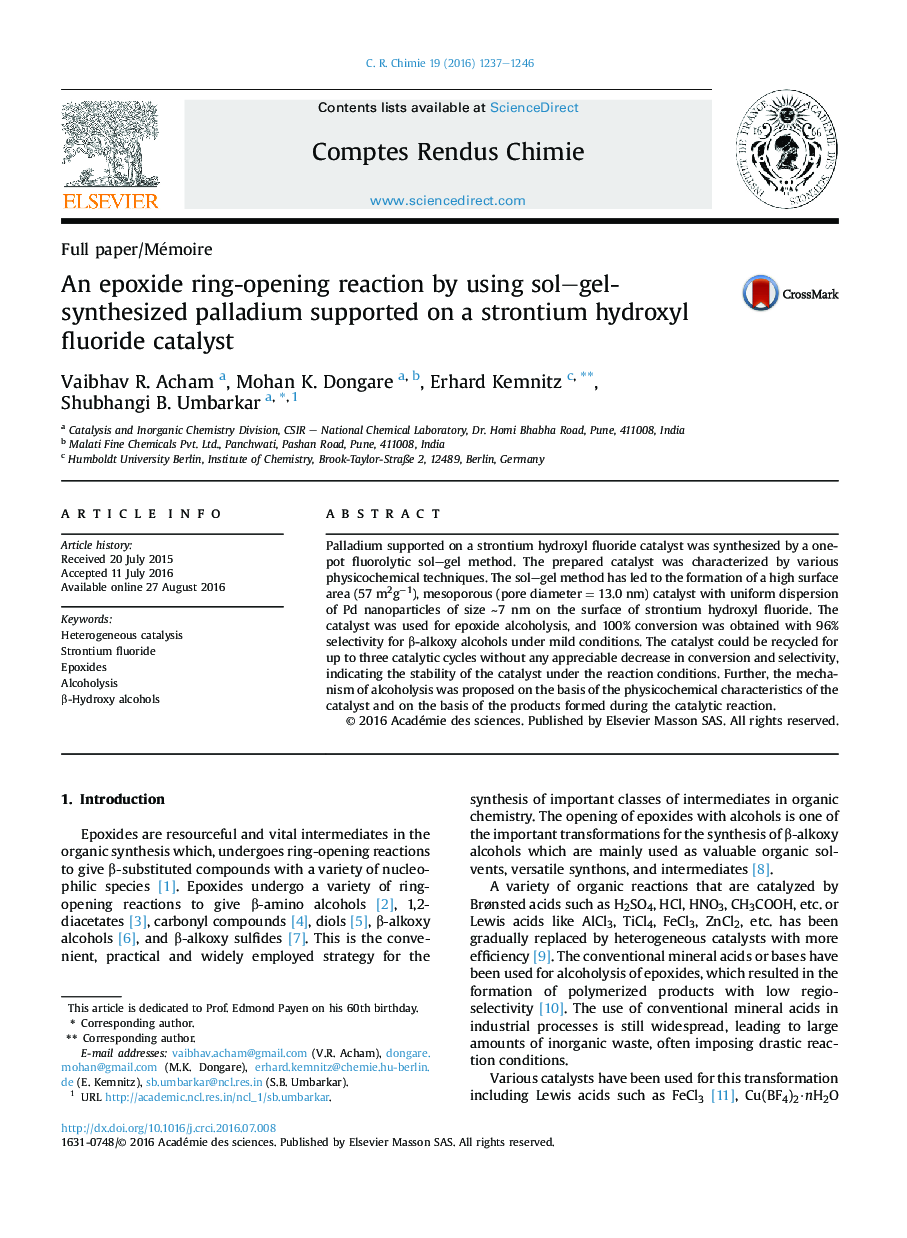| Article ID | Journal | Published Year | Pages | File Type |
|---|---|---|---|---|
| 6468692 | Comptes Rendus Chimie | 2016 | 10 Pages |
Palladium supported on a strontium hydroxyl fluoride catalyst was synthesized by a one-pot fluorolytic sol-gel method. The prepared catalyst was characterized by various physicochemical techniques. The sol-gel method has led to the formation of a high surface area (57 m2gâ1), mesoporous (pore diameter = 13.0 nm) catalyst with uniform dispersion of Pd nanoparticles of size â¼7 nm on the surface of strontium hydroxyl fluoride. The catalyst was used for epoxide alcoholysis, and 100% conversion was obtained with 96% selectivity for β-alkoxy alcohols under mild conditions. The catalyst could be recycled for up to three catalytic cycles without any appreciable decrease in conversion and selectivity, indicating the stability of the catalyst under the reaction conditions. Further, the mechanism of alcoholysis was proposed on the basis of the physicochemical characteristics of the catalyst and on the basis of the products formed during the catalytic reaction.
Graphical abstractPalladium supported on high surface area sol-gel synthesized hydroxyl fluoride showed high activity for the selective alcoholysis of epoxide under ambient conditions. The catalyst showed a high order of recyclability.Download high-res image (155KB)Download full-size image
